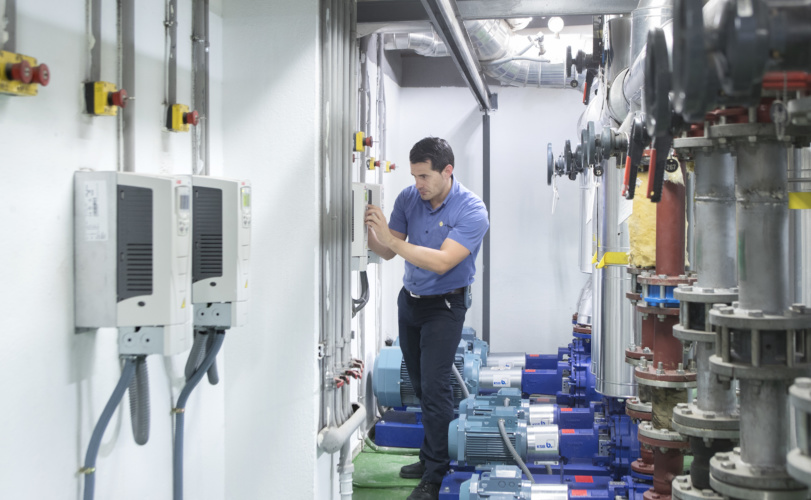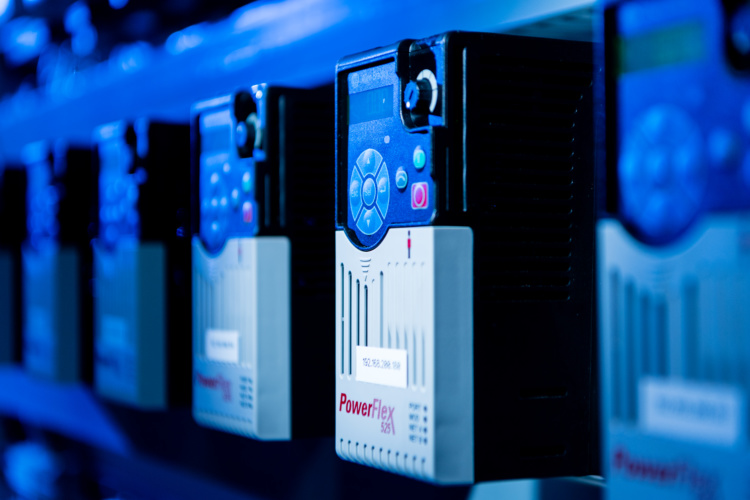Drives perform different tasks for customers in numerous settings who are starting to demand IIOT compatibility, better data manipulation, more efficiency, and greater process control. The Engineer sought the opinions of experts in this field to find out how they will deliver on these demands.
Meet the experts
- Arnold Taddeo, head of global product management – Drive Products, ABB Motion
- Jonathan Smith - field business leader - Power & Control Rockwell Automation
- Jason Peel, head of motion control business, Siemens UK
What trends / customer requirements are driving developments in your drives products?
AT: We’re seeing a continuing demand from our customers for process control and reliability. We work closely with customers to help them choose the right drive, so they can reach their goals to reduce downtime and maximize productivity. Another key trend is energy efficiency, both to contain costs and to reduce emissions that contribute to climate change. Today, one-third of global electricity is converted into motion by electric motors. By 2040 the number of motors in the world is set to double. Typically, a variable speed drive in combination with high efficiency motors will cut energy consumption by 30 per cent to 50 per cent.

JS: Without doubt, the capability for drives to leverage the Industrial Internet of Things (IIoT) is pushing on developments. Customers are expressing an increasing desire to have more control over devices for improved production and quality but additionally to gain actionable, real-time data about what is happening in their plant. Having great motor control with the potential for almost infinite adjustment of speed, torque and position control is expected from a modern drive, but the best products are now capable of much more, including support of predictive maintenance, active condition monitoring and real-time power and energy usage information. Customers expect also that new products should support the latest security protocols.
By 2040 the number of motors in the world is set to double
JP: There is an increasing expectation from customers to gain valuable data from assets to increase productivity/availability. We can meet these expectations, as our fully digitalised factory in Congleton includes: Digital Twin technology, Virtual CAVE (Computer Aided Visual Environment), and 3D glasses-enabled demo of the ‘digital factory floor’. Another fast-growing trend is customers requesting more integrated and configured products, meaning additional options to enhance performance are expected to be integrated into one or more products. This means a seamless flow of data from the customer to the manufacturer is critical to ensure fast delivery times as portfolios are now becoming more based on ‘make to order’.
Give one or two examples of how your drives are helping customers meet the challenges that they are facing?
JP: One of our key customer bases for drives is logistics and intralogistics companies. For instance, in intralogistics, companies are driving productivity savings, picking and moving goods quicker with more accuracy. Similarly, in a varied sector like utilities we see water companies are maintaining reliable supply through the online monitoring of connected assets and reducing energy bills by pumping far more efficiently. This is achieved not just by the drives’ components but through Total Integrated Automation (TIA). It is important to ensure that not only is a plant or facility totally integrated in all its hardware but connected through various IoT tools. For instance, our clients use MindSphere.
JS: A key demand in a modern plant is to maximise the availability of production operations. During downtime the cost of lost production quickly escalates, so keeping the plant online is critical. The latest PowerFlex drives have the capability to provide a detailed condition status in real time, not only of the drives themselves, but also associated motor operations, such as changes in load characteristics. This means is that rather than having fixed maintenance periods (or waiting for a failure) it’s now possible to use dynamic planned maintenance.
AT: By installing Variable Speed Drives (VSDs) and electric motors with IE3 energy efficiency classification, we helped cut the energy usage of InterContinental Hotel Madrid by 40 per cent. The equipment reduced energy consumption by 445,000 kWh a year - enough to boil two million kettles of water. ABB’s water dedicated drives provided crucial reliability at a key unmanned wastewater treatment plant in Pietarsaari, Finland. The drives have a built-in pump cleaning function to prevent clogging - reducing downtime and saving on manual cleaning costs. The drives can be remotely accessed, ensuring complete control of water levels to prevent the risk of flooding.

What’s the key product for you currently and how is it being applied?
AT: Our ultra-low harmonic drives are designed to combat the harmful effects of harmonics that may cause electrical equipment to run erratically and increase equipment failure. These VSDs produce exceptionally low levels of harmonics, reducing electrical losses in systems and making them more efficient and reliable. We have also developed variants of the ultra-low harmonic VSD specifically for the HVAC and water and wastewater markets. These drives have been installed in mission critical facilities like hospitals, data centres, and water treatment plants. They keep power networks clean, stable and compliant with the strictest harmonic standards.
JS: An ongoing trend is for customers to be evaluating their energy usage [and] how to minimise losses in their electrical supply network. Electrical disturbances have the potential to disrupt supplies [that] can lead to additional losses, resulting in extra costs from energy suppliers and increased capital costs in terms of larger supply items such as transformers or switchgear. A common electrical disturbance is “harmonics” where non-linear loads (such as conventional drives) provide a cumulative impact on the plant electrical supply network. The use of the low harmonic technologies within drives such as the PowerFlex 755T help mitigate harmonics at source.
JP: Our Sinamics G120X drive, which we launched in 2019, meets all the latest and upcoming UL, NEMA and EN/IEC standards for 2019 and beyond, and offers up to 100kA short-circuit current rating (SCCR), ensuring enhanced product safety and energy efficiency. This drive has been developed to meet the needs of the infrastructure market competitively, having dedicated features that enable pump / fan and compressor solutions to be installed more cost-effectively and specific safety-related modes to ensure building heating / ventilation systems perform in all conditions. The easy-to-use drive is applied across a variety of industrial environments.
What products or technologies do you see changing your sector in the future?
JP: I can see there being more integration with robotics, with drives controlling robots. Businesses will get faster operational insight as we move to 5G and overlay artificial intelligence, and software will play an increasingly important role, interpreting insight from data and proving plant improvements in the virtual world. New modelling tools combined with additive manufacturing techniques will have greater impact in new product designs, helping customisation and individualisation reach the market much quicker. Customers are also starting to request more integrated and configured products, meaning additional options to enhance performance are expected to be integrated into one product.

JS: The vision of a full IIoT platform is still quite difficult to achieve as true interoperability between multiple vendor platforms is not there yet. At Rockwell Automation, within our Logix environment we get very close to the sort of Plug-and-Play approach that people expect with personal devices. We call it Premier Integration, and it works by giving each device a dedicated profile which adapts it within the automation system and allows the users and programmers to concentrate on the automation and process control, rather than the configuration of individual items.
AT: Digital solutions allow us to make it easier for customers to use our products. For example, digital user manuals allow customers to quickly and easily access graphical and animated instructions right from their smartphone. By simply scanning a QR code located on our product, the customer has all the relevant information at their fingertips. Soon, it will be possible for customers to use their smartphone to connect their drive directly to our support team. This will allow us to quickly diagnose and resolve any issues. Fast and efficient troubleshooting will help customers maximize production uptime.




April 1886: the Brunkebergs tunnel
First ever example of a ground source heat pump?